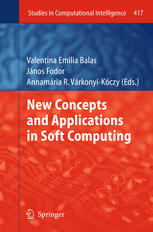

Most ebook files are in PDF format, so you can easily read them using various software such as Foxit Reader or directly on the Google Chrome browser.
Some ebook files are released by publishers in other formats such as .awz, .mobi, .epub, .fb2, etc. You may need to install specific software to read these formats on mobile/PC, such as Calibre.
Please read the tutorial at this link: https://ebookbell.com/faq
We offer FREE conversion to the popular formats you request; however, this may take some time. Therefore, right after payment, please email us, and we will try to provide the service as quickly as possible.
For some exceptional file formats or broken links (if any), please refrain from opening any disputes. Instead, email us first, and we will try to assist within a maximum of 6 hours.
EbookBell Team

4.3
28 reviewsThe book provides a sample of research on the innovative theory and applications of soft computing paradigms.
The idea of Soft Computing was initiated in 1981 when Professor Zadeh published his first paper on soft data analysis and constantly evolved ever since. Professor Zadeh defined Soft Computing as the fusion of the fields of fuzzy logic (FL), neural network theory (NN) and probabilistic reasoning (PR), with the latter subsuming belief networks, evolutionary computing including DNA computing, chaos theory and parts of learning theory into one multidisciplinary system. As Zadeh said the essence of soft computing is that unlike the traditional, hard computing, soft computing is aimed at an accommodation with the pervasive imprecision of the real world. Thus, the guiding principle of soft computing is to exploit the tolerance for imprecision, uncertainty and partial truth to achieve tractability, robustness, low solution cost and better rapport with reality. In the final analysis, the role model for soft computing is the human mind.
We hope that the reader will share our excitement and find our volume both useful and inspiring.